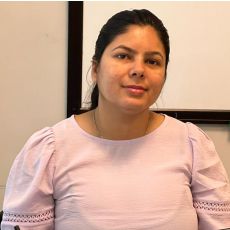
Science (SNC2D)
Course Description
This course enables students to enhance their understanding of concepts in biology, chemistry, earth and space science, and physics, and of the interrelationships between science, technology, society, and the environment. Students are also given opportunities to further develop their scientific investigation skills. Students will plan and conduct investigations and develop their understanding of scientific theories related to the connections between cells and systems in animals and plants; chemical reactions, with a particular focus on acid/base reactions; forces that affect climate and climate change; and the interaction of light and matter.
For Ministry Guideline Click Here
| Units | Descriptions | Length (Approximately) |
|---|---|---|
| 1. | Biology: Tissues, Organs, and Systems of Living Things Students will demonstrate an understanding of the ways in which plants and animals, including humans, are made of specialized cells, tissues, and organs that are organized into systems. They will also evaluate the social and ethical implications of developments in medicine and medical technology. |
27 hours |
| 2. | Chemistry: Chemical Reactions Students will demonstrate an understanding of the predictable ways in which chemicals react. They will also explore how chemical reactions may have a negative impact on the environment, but they can also be used to address environmental challenges. |
27 hours |
| 3. | Earth and Space: Climate Change Students will demonstrate an understanding that Earth’s climate is dynamic and is the result of interacting systems and processes. They will explore how global climate change is influenced by both natural and human factors. Students will also investigate the variety of ways climate change affects living things and natural systems. Finally, they will assess the impact of human activity on climate change and to identify effective courses of action to reduce this impact. |
27 hours |
| 4. | Physics: Light and Geometric Optics Students will demonstrate an understanding of the characteristics and properties of light that can be manipulated with mirrors and lenses for a range of uses. They will also explore the ways in which society has benefited from the development of a range of optical devices and technologies. |
27 hours |
| Exam: This is a proctored exam worth 30% of your final grade. | 2 hours | |
| Total | 110 hours | |
Overall Curriculum Expectations
By the end of this course, students will:
- Demonstrate scientific investigation skills (related to both inquiry and research) in the four areas of skills (initiating and planning, performing and recording, analysing and interpreting, and communicating);
- Identify and describe a variety of careers related to the fields of science under study, and identify scientists, including Canadians, who have made contributions to those fields.
By the end of this course, students will:
- Evaluate the importance of medical and other technological developments related to systems biology and analyse their societal and ethical implications.
- Investigate cell division, cell specialization, organs, and systems in animals and plants, using research and inquiry skills, including various laboratory techniques.
- Demonstrate an understanding of the hierarchical organization of cells, from tissues, to organs, to systems in animals and plants.
By the end of this course, students will:
- Analyse a variety of safety and environmental issues associated with chemical reactions, including the ways in which chemical reactions can be applied to address environmental challenges.
- Investigate, through inquiry, the characteristics of chemical reactions.
- Demonstrate an understanding of the general principles of chemical reactions, and various ways to represent them.
By the end of this course, students will:
- Analyse some of the effects of climate change around the world and assess the effectiveness of initiatives that attempt to address the issue of climate change.
- Investigate various natural and human factors that influence Earth's climate and climate change.
- Demonstrate an understanding of natural and human factors, including the greenhouse effect, that influence Earth's climate and contribute to climate change.
By the end of this course, students will:
- Evaluate the effectiveness of technological devices and procedures designed to make use of light and assess their social benefits.
- Investigate, through inquiry, the properties of light, and predict its behaviour, particularly with respect to reflection in plane and curved mirrors and refraction in converging lenses.
- Demonstrate an understanding of various characteristics and properties of light, particularly with respect to reflection in mirrors and reflection and refraction in lenses.
Assessment & Evaluation of student performance
Formative assessments are learning practices that provide important feedback to student progress. Examples include homework and quizzes.
Summative assessments form a foundation for final mark allotment at the end of the unit, term and final evaluation.
An achievement chart will be given to students at regular intervals and the purpose of the charts is to provide feedback to students in relation to content and performance strands.
| Knowledge and understanding | Communication | Thinking Inquiry and Problem solving | Application |
|---|---|---|---|
| 25% | 25% | 25% | 25% |
Unit Tests, Written assignments, presentations, Classroom Observations and Classroom conversations.










